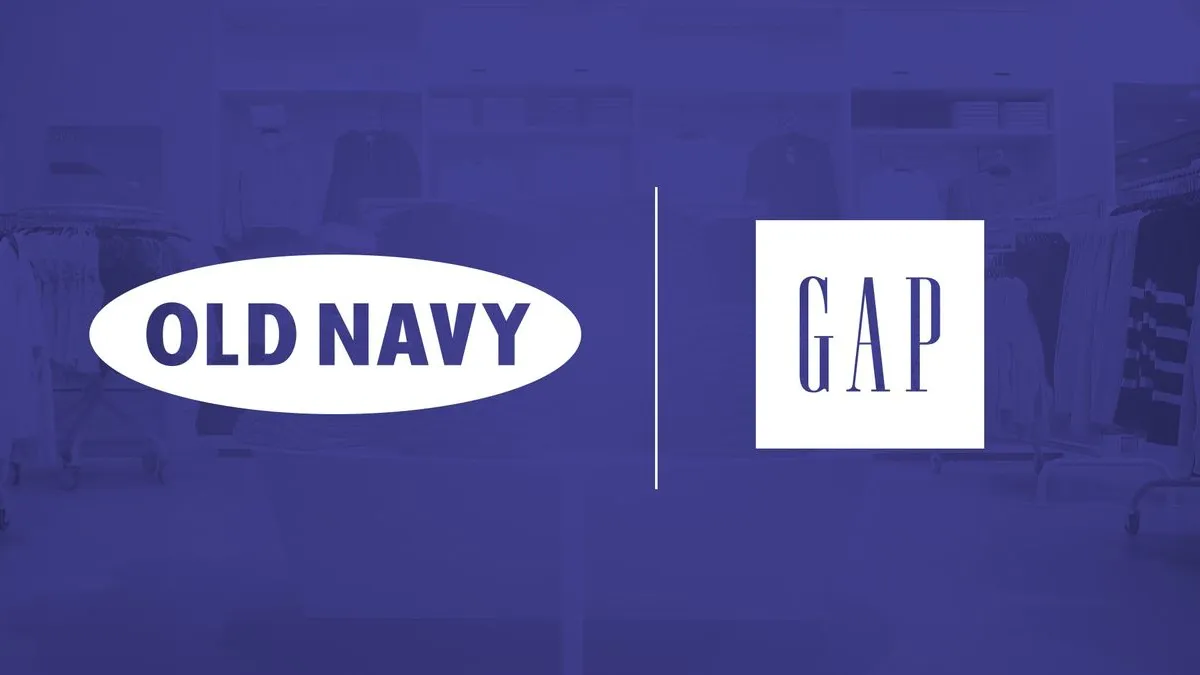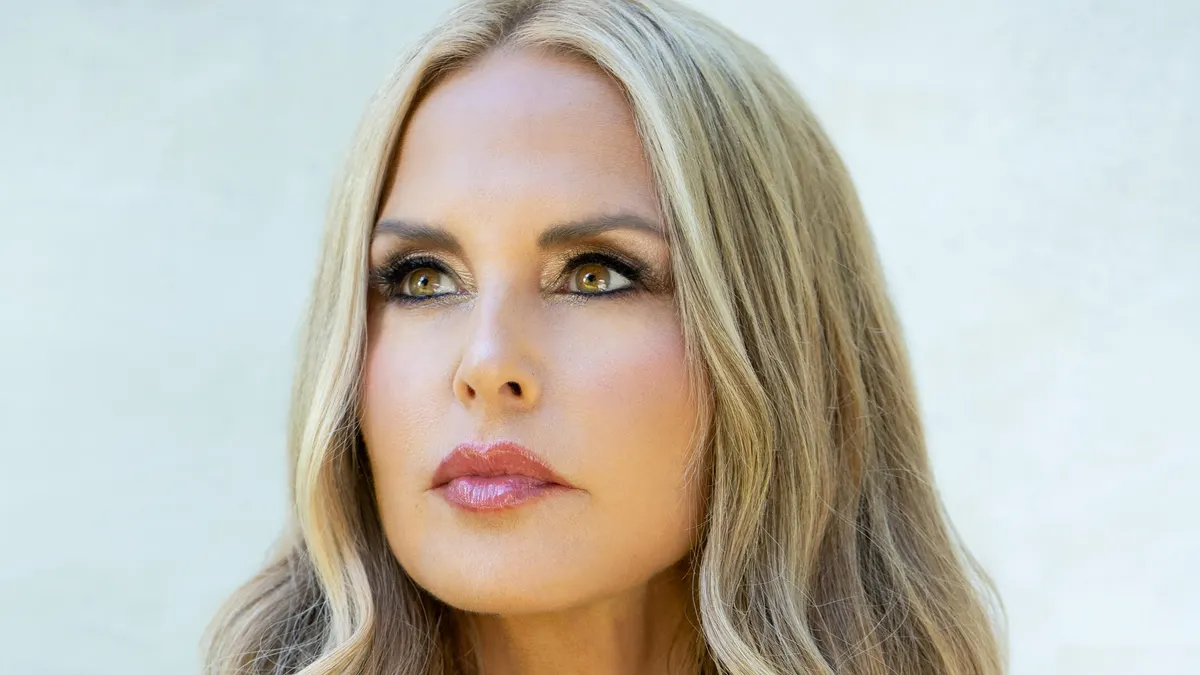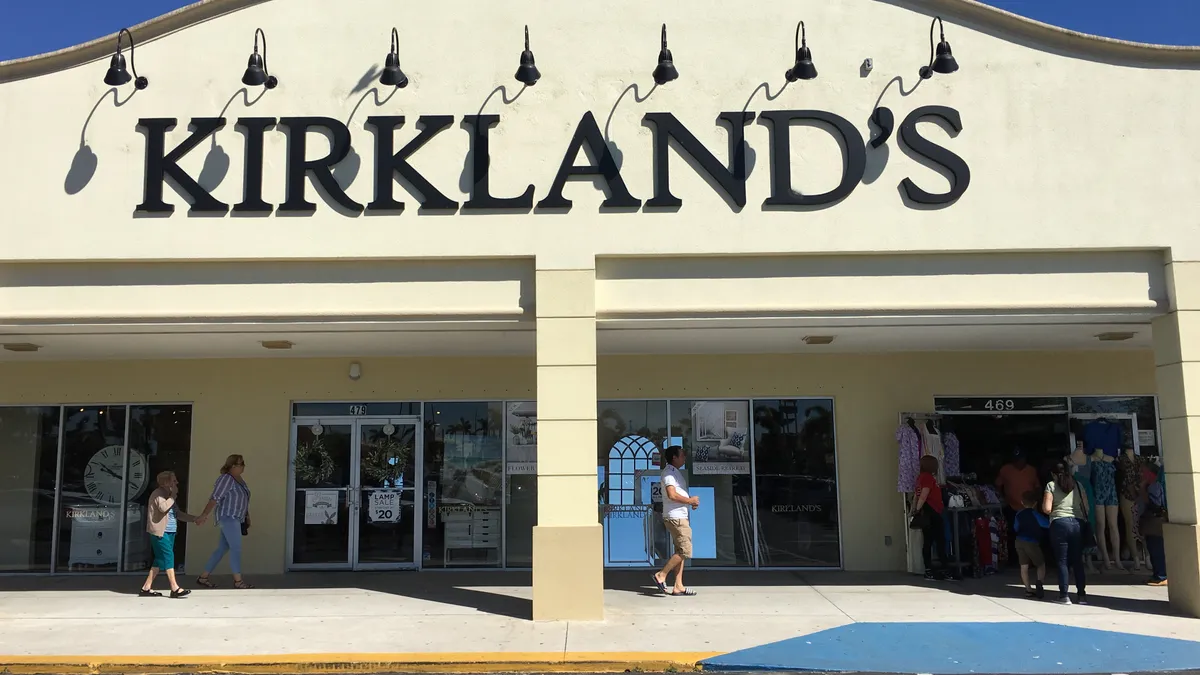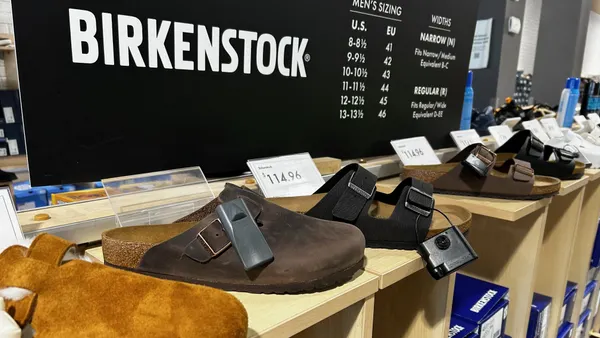Retail Dive was all set to give Gap Inc.'s plan to spin off Old Navy its "Deal of the Year" Dive Award, in light of the huge implications for both a stand-alone Old Navy business and the remaining "new Gap Inc." But recent developments have called it into question. While the company says all systems are go, (and as of press time, they were), the plan has been delayed by several weeks, at least. And there's reason to believe that it ultimately may not go forward after all.
So the deal is effectively on hold, given the delay, the skepticism increasingly swirling around it and the fact that Art Peck, widely credited with cooking it up, is no longer leading the company. Still, it's worth taking a look at what could be a defining development for Gap Inc., whether it goes forward or not.
The maneuver: In February, Gap Inc. announced a plan to spin off its better-performing Old Navy discount business and leave struggling namesake Gap to carry on with Banana Republic and a slew of smaller brands.
The rationale: The company describes this as "the most compelling path forward for our brands," and, at a special meeting in September, CFO Teri List-Stoll stipulated, "These are two very different business models."
The outlook: Prospects for the deal remain tenuous as more analysts rail against it. In November, the company seemed to throw cold water on the scheme with the abrupt ouster of Peck as CEO. Last year, the idea held sway as a way to unlock value at Old Navy, but that ebbed as things soured for the discounter in 2019. After making no mention of the plan in announcing Peck's exit, Gap Inc.'s board the next day said it's still prepping it. Executives reiterated that during the company's third quarter earnings call, taking analysts by surprise.
The strengths
There is some argument for a separation. The superiority of Old Navy — a 1994 innovation designed to stand up to emerging competition from cheaper denim — seemed undeniable in recent years. In 2017, that led Gap Inc. to forge a growth strategy with Old Navy as the cornerstone, but less than two years later, they're waving goodbye instead. The business models and customer bases have bifurcated, so each needs its own strategy, according to a statement from Robert Fisher (board chairman and the founder's son), posted before he took the reins from Peck as interim CEO.
Each side has strength. Old Navy could stand alone as an $8 billion company, while the new Gap Inc., notching some $9 billion each year, would hold Gap, Banana Republic, Athleta and others. Old Navy, led by brand chief Sonia Syngal, is centering a sales goal of "$10 billion and beyond" on almost doubling its fleet of 1,000-plus stores (many in smaller, more rural markets that represent uncharted territory).
That would help avoid cannibalization, according to foot traffic analytics platform Placer.ai, which says Old Navy's visit trends resemble off-pricer (and retail success story) Ross. "Should this level of focus and strategy hold throughout their expansion, Old Navy's new spin-off may become one of the most exciting retailers to watch," according to a Placer.ai report emailed to Retail Dive. "But Old Navy distribution isn't always maximized."
Gap and its portfolio, meanwhile, would travel in the opposite direction. They're already leaving regional malls (with Gap alone tagging 230 stores for closure, about half of its U.S. footprint when coupled with 68 store closures in 2018) and embracing e-commerce. Active brand Athleta has particular potential, recently divulging revenue of $900 million last year and a 23% compound annual growth rate over the past six years. Peck, before he left, also singled out the company's recent $35 million acquisition of children's apparel line Jane & Jack as bringing great bang for the buck.
The perils
The separation is also rife with risk, however, not least because Old Navy has faltered, with five straight quarters of comp deceleration, and drops in traffic to stores in the third quarter as recorded by both Placer.ai and Cowen & Co.
That, and a dearth of details, have unnerved analysts, and Peck's untimely exit seemed to be the last straw for some. Wedbush analysts went so far as to speculate that he pushed the spinoff "as a way to extend his career," and that Old Navy's Syngal is "a potential successor, assuming the Old Navy spin off is called off," to take over from Peck and lead Gap Inc. as a whole.
Some skepticism centers on lost synergies of what is now a highly centralized and streamlined supply chain. "Our negative view has been based on [Gap Inc.] trying to build a narrative around the value unlock of separating the portfolio of brands…after years of building a narrative around the significant synergies and the intrinsic value of the integrated brand platform," Credit Suisse analyst Michael Binetti wrote in a client note.
And there are broader challenges in apparel — brought in part by a consumer less able, less willing and less required to buy clothes. A market where people have less need for formal attire should be a prime one for the Gap brand, which used to define casual fashion. But, without a talented merchant at the helm, Gap has ceded the space to others, experts say. Going alone would present a real test for the once-iconic brand, which wouldn't have Old Navy's robustness to lean on, or much time for its faster-growing but much smaller siblings to catch up.
"Revitalizing the Gap brand will depend, ultimately, on its product," Ray Hartjen, RetailNext marketing director, told Retail Dive in an email. "The organization infrastructure and operational capabilities across brands are there. They'll just need flawless execution on strategies to succeed."
While Fisher and other Gap Inc. executives argued again for the plan during their third quarter conference call, analysts for the most part seem to be unmoved. "We continue to believe the Gap Inc. / Old Navy separation does not result in any immediate value creation and comes with high one-time costs," Morgan Stanley analysts led by Kimberly Greenberger wrote in a Nov. 22 client note, in which they also questioned "why the discrete brands are unable to develop transformation initiatives pre-separation."
Finding a new CEO will likely take at least three months and as long as six to nine months, they also said. That may be long enough for Old Navy to recover, and restore at least some of the reasoning behind its spinoff.
Then again, it may not.























